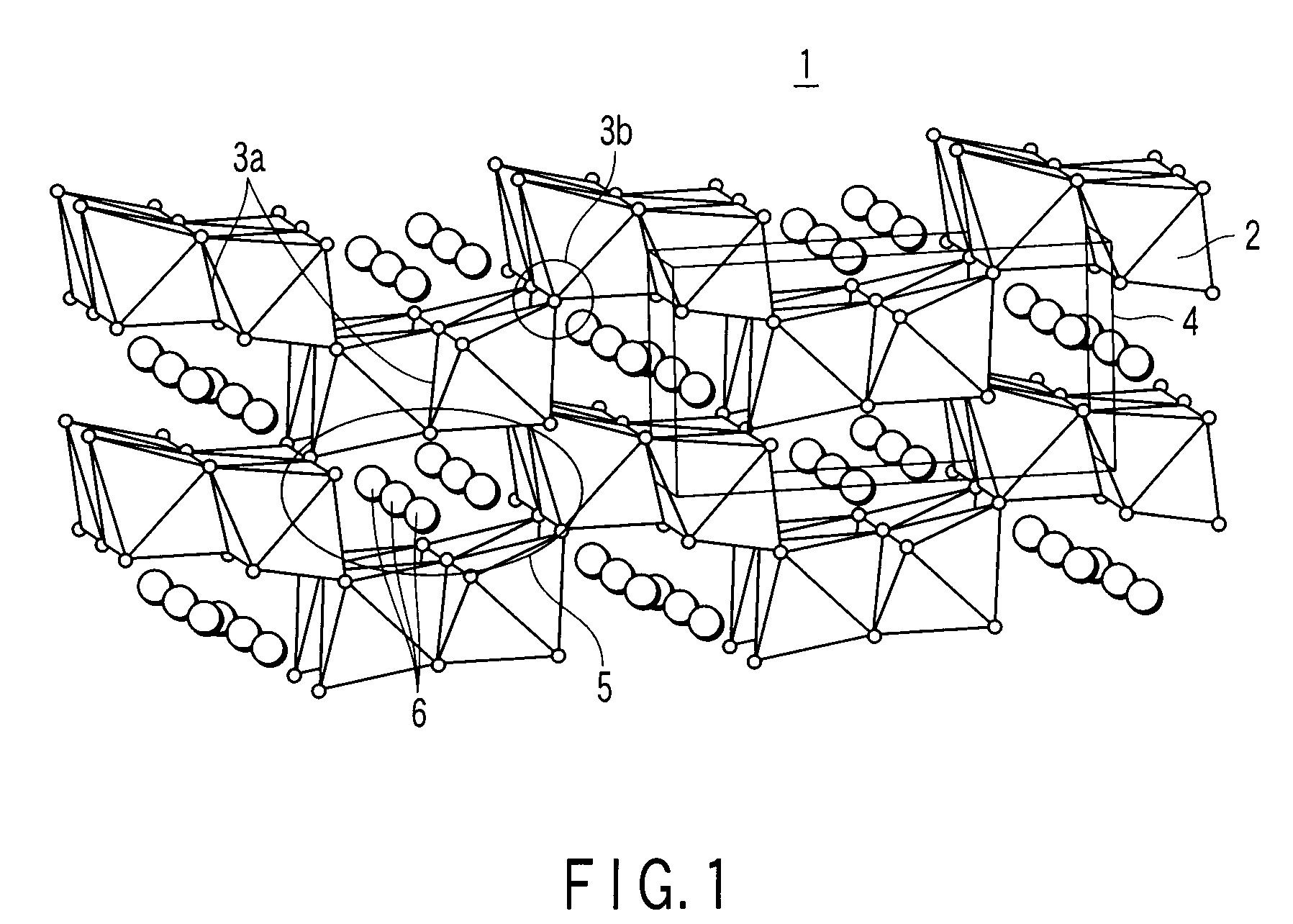Negative electrode active material for nonaqueous electrolyte battery, nonaqueous electrolyte battery, battery pack, and vehicle
a technology of negative electrode active material and nonaqueous electrolyte, which is applied in the direction of special data processing applications, position/direction control, gas pressure propulsion mounting, etc., can solve the problem of low effective capacity, low capacity density per unit weight, and inability to present three-dimensional space suitable for intercalation and deintercalation of lithium ion
- Summary
- Abstract
- Description
- Claims
- Application Information
AI Technical Summary
Benefits of technology
Problems solved by technology
Method used
Image
Examples
first embodiment
[0075]Referring now to FIGS. 2 to 6, a nonaqueous electrolyte battery according to a first embodiment of the invention will be described below.
[0076]As shown in FIG. 2, a flat spirally wound coiled type electrode group 16 is housed in an armoring member 17. The coiled type electrode group 16 includes a positive electrode 13, a negative electrode 14, and a separator 15 interposed therebetween, being spirally wound in a flat shape. The nonaqueous electrolyte is held in the coiled electrode group 16.
[0077]As shown in FIG. 3, the negative electrode 14 is positioned on the outermost circumference of the coiled electrode group 16. At the inner circumferential side of the negative electrode 14, the separator 15, positive electrode 13, separator 15, negative electrode 14, separator 15, positive electrode 13, and separator 15 are disposed in this order. The negative electrode 14 includes a negative electrode current collector 14a, and a negative electrode active material containing layer 14b...
second embodiment
[0097]Referring now to FIG. 8, a battery pack according to a second embodiment will be explained.
[0098]The battery pack of the second embodiment has a plurality of nonaqueous electrolyte batteries of the first embodiment as single batteries. The individual single batteries are electrically arrayed in series or in parallel to form a battery module. Examples of the single batteries include batteries in the types as shown in FIG. 2, 4, or 7.
[0099]As mentioned above, the single batteries of the first embodiment are excellent in repeated charging and discharging performance, high in capacity density, and also excellent in rapid charging and discharging performance. When a battery pack is formed by using such single batteries, the entire structure is reduced in size if the design specification is the same as in the performance of a conventional product.
[0100]As shown in FIG. 8, single batteries 121 for composing a battery pack 54 are flat nonaqueous electrolyte batteries shown in FIG. 2. ...
third embodiment
[0111]Referring to FIGS. 10 to 15, a vehicle and a motorbike according to a third embodiment will be explained.
[0112]The vehicle of the third embodiment has the battery pack 54 of the second embodiment. As mentioned above, the battery pack 54 of the second embodiment is excellent in repeated charging and discharging performance, high in capacity density, and excellent in rapid charging and discharging performance, and is generally reduced in size if designed in the same specification as in the performance of a conventional product. By using such battery pack 54, the power source system of the vehicle can be reduced in size. The vehicle mentioned here includes a two-wheel or four-wheel hybrid electric vehicle, a two-wheel or four-wheel electric vehicle, and a power-assisted bicycle.
[0113]FIGS. 10 to 12 show the hybrid vehicle combining an internal combustion engine and a battery-driven motor as the driving power source. For driving a vehicle, a driving source having a wide range of r...
PUM
 Login to View More
Login to View More Abstract
Description
Claims
Application Information
 Login to View More
Login to View More - R&D
- Intellectual Property
- Life Sciences
- Materials
- Tech Scout
- Unparalleled Data Quality
- Higher Quality Content
- 60% Fewer Hallucinations
Browse by: Latest US Patents, China's latest patents, Technical Efficacy Thesaurus, Application Domain, Technology Topic, Popular Technical Reports.
© 2025 PatSnap. All rights reserved.Legal|Privacy policy|Modern Slavery Act Transparency Statement|Sitemap|About US| Contact US: help@patsnap.com



